In mourning, universities memorialize the victims of Flight 752
“This is a loss for individual universities, individual families and friends. It’s a loss for the scholarly community. It’s a loss for this country.”
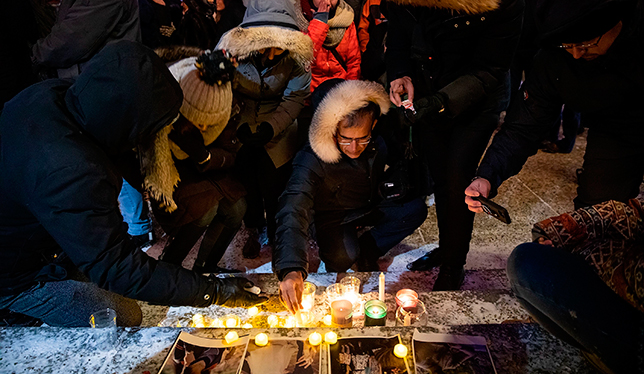
One week after Ukraine International Airlines Flight 752 was shot out of the skies outside Tehran, campuses across Canada fell silent. At 1 p.m. Eastern time on January 15, universities held a moment of silence to mourn and honour those killed in one of the single heaviest losses of life that the Canadian academic community has experienced outside of wartime.
Of the 176 people on board Flight 752, 138 were connecting on to Canada; of these, at least 61 were directly affiliated with Canadian universities (see list below). According to figures compiled by Universities Canada, 41 current students and seven faculty members from 19 Canadian universities were killed in the crash, as well as alumni of at least another three. More than a dozen passengers had close relationships to people at Canadian universities – they were the children, spouses or parents to someone in the academic community, or would-be students flying to Canada with plans to study here.
“This is a loss for individual universities, individual families and friends. It’s a loss for the scholarly community. It’s a loss for this country,” said Robert Summerby-Murray, president of Saint Mary’s University in Halifax. Two graduate students from Saint Mary’s were killed in the crash.
Read also: The tragedy of Flight 752
In all, the Canadian Science Policy Centre estimates that 85 passengers had ties to this country’s science community – “an unbelievable, unbearable” loss, said the CSPC’s president and CEO, Mehrdad Hariri, who emigrated to Canada from Iran in 1996.
It was a sad combination of timing and happenstance that led most of the passengers to be aboard the flight in Tehran on the early morning of January 8, with plans to continue on to Toronto. Many were Iranians or Iranian-Canadians working or studying at Canadian universities who were returning after the holidays. The flight to Toronto via Kyiv was one of the most affordable and convenient options open to them.
When it was still night on Tuesday, January 7 in Canada, Canadians received the first news that a flight had crashed just after takeoff in Iran amid heightened tensions in the region. By very early morning on Canada’s East Coast, word had started to filter out that many passengers on the plane called Canada and its universities home. Three days later, the Iranian military released a statement admitting Iran had shot down the plane because of “human error.”
At universities, the shock began to set in even before the plane’s passenger manifest was formally released as victims’ names started to pop up on Facebook and Twitter. At the University of Alberta, president David Turpin received a text early that Wednesday morning from a staff member, saying that social media indicated several students were on board the downed plane. “In very short order, we had assembled the crisis team that took the lead in managing our response,” he said.

By day’s end, it was confirmed that 10 students and faculty from U of A died in the crash, as well as three family members. Among the passengers were the husband-and-wife team of engineering professors Pedram Mousavi and Mojgan Daneshmand, who together oversaw research labs of more than 50 students. The pair had met and married in Iran, and moved together to Canada where they trained at the University of Manitoba and the University of Waterloo before Dr. Daneshmand was offered a Canada Research Chair at U of A.
“They were super bright, highly innovative, very, very hard working,” said their longtime friend and colleague, Safieddin Safavi-Naeini, an engineering professor who holds the NSERC/C-COM Industrial Research Chair at the University of Waterloo. He said the duo set the bar high for what research could accomplish – original, complex science that could solve real-world problems. They encouraged their students, many of them also with ties to Iran, to do the same, he said.
Outside of their labs, Drs. Mousavi and Daneshmand opened their home to students and encouraged mentees to reach out at all hours. Many called them “mom and dad.” The pair knew how hard it could be for newcomers from a different country – they too had struggled early on, said Dr. Safavi-Naeini. “Above everything else, they were kind.”
Students, faculty and families remain grief-stricken. At least one university hired Farsi translators to assist families, and every university affected put in place extra counselling supports and crisis teams to help.
Universities are also dealing with the painful logistical tasks related to the number of empty places: organizing the dorm rooms of students who will not be returning, finding faculty to help students now without advisors, supporting families through what is proving to be a difficult process of identifying and repatriating remains, and hosting private and public memorials to honour the victims.
“Naturally, people are still working through a lot of things, and will be for a long time. People are still grieving and they will be for months and years,” said Dr. Turpin.
The federal government has been working with universities since the plane crash. Deputy Prime Minister Chrystia Freeland arrived at U of A on January 9 to meet with students, faculty and staff, and Prime Minister Justin Trudeau spoke at a nationally televised vigil in Edmonton. “They have been on campus with their response teams. They’ve been working with us in making sure that the needs of students and family are being supported,” said Dr. Turpin.
Memorial scholarships
Numerous memorial scholarships also are being set up at universities across the country, including at U of A, which plans to endow two graduate student memorial awards. The Ontario government announced it too will create scholarships, each worth $10,000, in memory of the 57 Canadian victims on the flight; for its part, the federal government pledged to match donations, up to $1.5 million, to the Canada Strong fund, a charity established to help families whose loved ones were killed in the plane crash.
“There is this tremendous sense of grief and disillusionment at the cause of this, and a tremendous sense of loss in terms of potential. We have this desire to do something to help us look forward now in a more hopeful way,” said Rahim Rezaie, who helped spearhead the Iranian Student Memorial Scholarship Fund at the University of Toronto. U of T lost eight members of its community, including six students.
Dr. Rezaie, a U of T alumnus who works at the university as assistant director of the International Virtual Engineering Student Teams (InVEST) Project, said he hopes these scholarships will open Canadian university doors to students who, like many of those on the plane, overcame hardship to pursue their studies in Canada.
The Canadian Bureau for International Education estimates that Iranian students represent about two percent of Canada’s total international student population – or around 11,000 students in 2018. That number is growing as the United States makes it increasingly difficult for Iranian students to procure visas. In 2017-2018, Iranian students were the second-fastest-growing group of international students in Canada.
But those numbers mask some of the immense difficulties Iranian students face in Canada. Iran is caught in an economic crisis, with a rapidly shrinking economy, weakening currency and inflation running near 40 percent. The financial pressure amplifies the needs of students daily, said Dr. Rezaie. “There’s unquestionably a tremendous number of students who could use this support to come to Canada and to study and to make an impact,” he said.
Gina Parvaneh Cody, the Iranian-born engineer and Concordia University alumna for whom the university’s school of engineering and computer science is named, is the lead donor of a memorial scholarship fund for Iranian students being set up at her alma mater. This tragedy highlights “how vital international students and immigrants are for our universities, and how diverse Canadian higher education really is,” she said.
Dr. Cody said she believes that this tragedy could bring people from diverse backgrounds together to learn and to resist the increasing divisiveness in the world. Seeing the faces of the victims of the crash and hearing their stories “exposes the narrative of ‘us and them’ as an illusion,” she said.
Several staff and students at Canadian universities spoke with pride of the national reaction to the plane crash – that this was considered a Canadian tragedy rather than a misfortune experienced by those with ties to Iran. “It’s a shared grief that brings people closer and makes us more kind and considerate towards one another,” said Sadra Kord-Jamshidi, president of the Dalhousie Iranian Student Society.
U of T’s Dr. Rezaie, along with others interviewed for this story, said he’s received near-daily messages from around the world expressing sadness at the loss and appreciation for the national embrace of Canadian-Iranian scholars. “Home is not a place, it is a feeling, and thanks for giving Iranian students a second home outside their country,” one student wrote in a letter that Dr. Turpin read to University Affairs.
Mourning at Canadian universities continues and will for some time, said Dr. Summerby-Murray at Saint Mary’s. In a convocation address two weeks after the crash, he spoke of the prolonged grief at the university. The lasting legacy of students and teachers on flight 752 will be the accomplishments of students and teachers inspired by them, he said. “We have to do our best as remaining members of the community to take on the hopes and dreams of our two students and all others, recognizing that those dreams cannot be fulfilled in them.”
Shattered dreams: Remembering the victims of Flight 752*
Carleton University
- Fareed Arasteh, PhD student, biology
- Mansour Pourjam, alumnus, BSc in biology
Concordia University
- Siavash Ghafouri-Azar, alumnus, aeronautical engineering
- Sara Mamani, alumna, aeronautical engineering
Dalhousie University
- Sharieh Faghihi, instructor, faculty of dentistry
- Masoumeh Ghavi, student, engineering
- Mandieh Ghavi, accepted to study in fall 2020
École de technologie supérieure
- Aida Farzaneh, PhD student and instructor, department of construction engineering
- Arvin Morattab, former PhD student, engineering
McGill University
- Negar Borghei, master’s student, human nutrition
- Faraz Falsafi, alumnus, computer science
McMaster University
- Iman Aghabali, student, engineering
- Mehdi Eshaghian, student, engineering
- Siavash Maghsoudlou, alumnus, postdoctoral researcher, PhD graduate in health sciences
Ontario Tech University
- Razgar Rahimi, PhD graduate and sessional instructor in the faculty of engineering and applied sciences
Queen’s University
- Amir Moradi, student, arts and science
Ryerson University
- Mahsa Amirliravi, alumna, master of engineering
- Mohsen Salahi, alumnus, master of engineering
Saint Mary’s University
- Fatemeh Mahmoodi, master’s student, finance
- Maryam Malek, master’s student, finance
University of Alberta
- Mojgan Daneshmand, associate professor, faculty of engineering, Canada Research Chair in Radio Frequency Microsystems for Communication and Sensing
- Mohammad Mahdi Elyasi, alumnus, MSc in mechanical engineering
- Pouneh Gorji, master’s student, computing science
- Pedram Mousavi, professor, faculty of engineering, NSERC Industrial Research Chair in Intelligent Integrated Sensors and Antennas
- Elnaz Nabiyi, PhD student, department of accounting, operations and information systems
- Arash Pourzarabi, master’s student, computing science
- Nasim Rahmanifar, master’s student, mechanical engineering
- Saba Saadat, student, department of biological sciences
- Sara Saadat, alumna, BSc, department of psychology
- Amir Saeedinia, PhD student, mechanical engineering
University of British Columbia
- Mehran Abtahi, postdoctoral fellow, civil engineering
- Niloofar Razzaghi, alumna, bachelor of education
University of Calgary
- Shadi Jamshidi, alumnus, master of engineering
- Ghanimat Azhdari, PhD student, biocultural conservation
- Milad Ghasemi Ariani, PhD student, marketing and consumer studies
University of Manitoba
- Amirhossein Ghorbani Bahabadi, student, bachelor of science
- Amirhossein Ghassemi, master’s student, biomedical engineering
- Forough Khadem, alumna, PhD in immunology
University of Ottawa
- Mehraban Badiei Ardestani, student, health sciences
- Saeed Kadkhodazadeh Kashani, PhD student, chemistry and biomolecular science
- Alma Oladi, PhD student, mathematics and statistics
University of Toronto
- Mojtaba Abbasnezhad, PhD student, teaching assistant, electrical engineering
- Mohammad Amin Beiruti, PhD student, computer science
- Mohammad Amin Jebelli, master’s student, health science in translational medicine
- Mohammad Hossein Asadi Lari, MD/PhD student, faculty of medicine
- Zeynab Asadi Lari, student, bachelor of science
- Mohammad Salehe, PhD student, computer science
University of Victoria
- Roja Omidbakhsh, student, business
University of Waterloo
- Mojgan Mansour Esnaashary Esfahani, PhD student, civil engineering
- Marzieh (Mary) Foroutan, PhD student, geography
University of Windsor
- Samira Bashiri, research assistant, faculty of science
- Pedram Jadidi, PhD student, civil engineering
- Hamidreza Setarah Kokab, PhD student, mechanical engineering
- Zahra Naghibi, PhD student, civil engineering
Western University
- Hadis Hayatdavoudi, PhD student, chemistry
- Milad Nahavandi, PhD student, chemical and biochemical engineering
- Ghazal Nourian, student, mechanical and materials engineering
- Sajedeh Saraeian, master’s student, chemical and biochemical engineering
York University
- Sadaf Hajiaghavand, student, human resources management program
- Pegah Safar Poor, student, bachelor of science in biology
- Masoud Shaterpour Khiaban, student, postgraduate certificate in business administration program
* A list of the passengers who had a current or recent connection with the university community in Canada.
Featured Jobs
- Psychology - Assistant ProfessorSt. Jerome's University
- Neuroscience - Assistant ProfessorMacEwan University
- Director and Stauffer-Dunning Chair, School of Policy Studies - Associate or Full ProfessorQueen's University
- Business - Assistant Professor (Digital Technology)Queen's University
- Psychology - Assistant Professor (Quantitative Methods / Data Science)MacEwan University



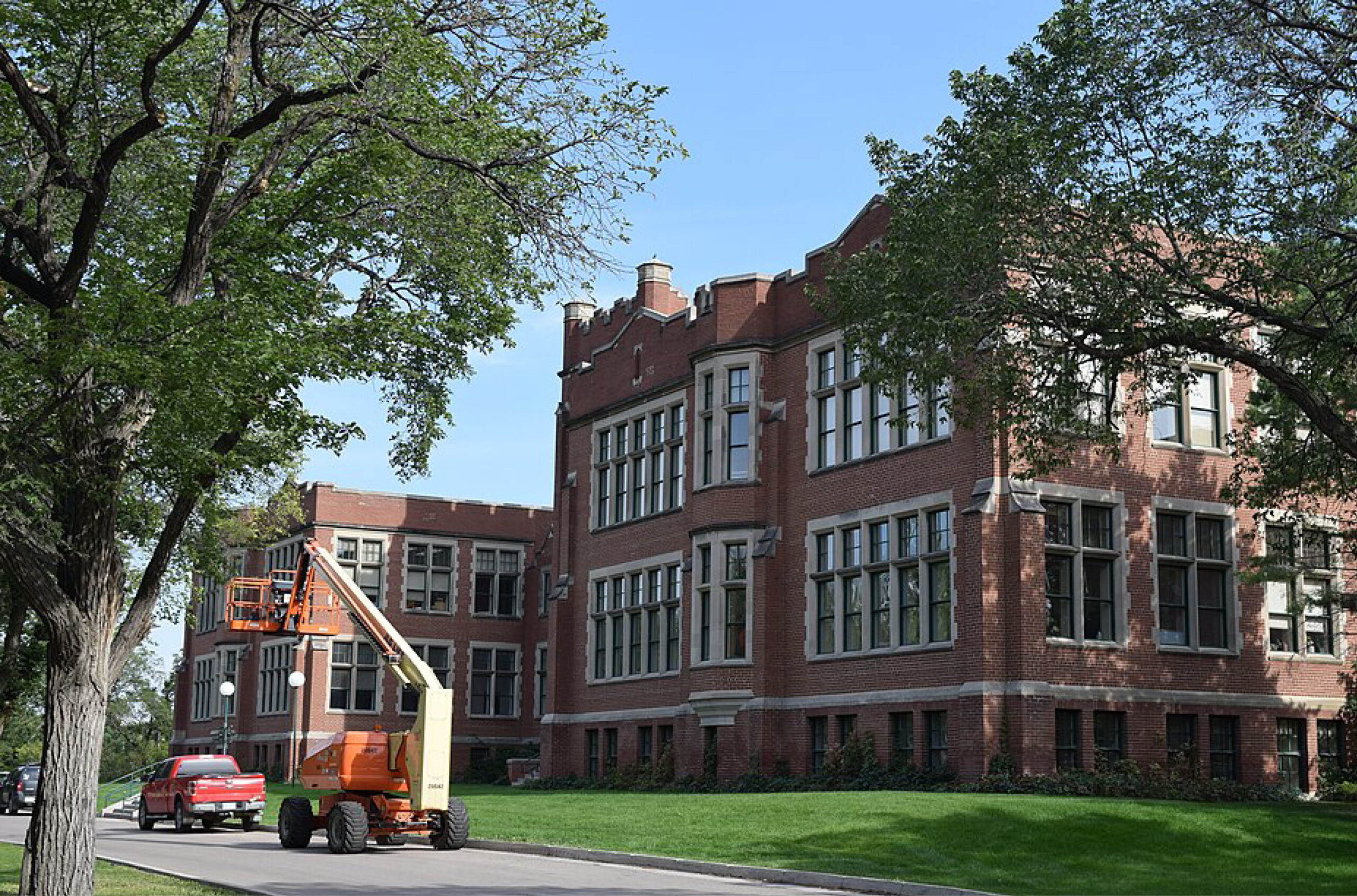

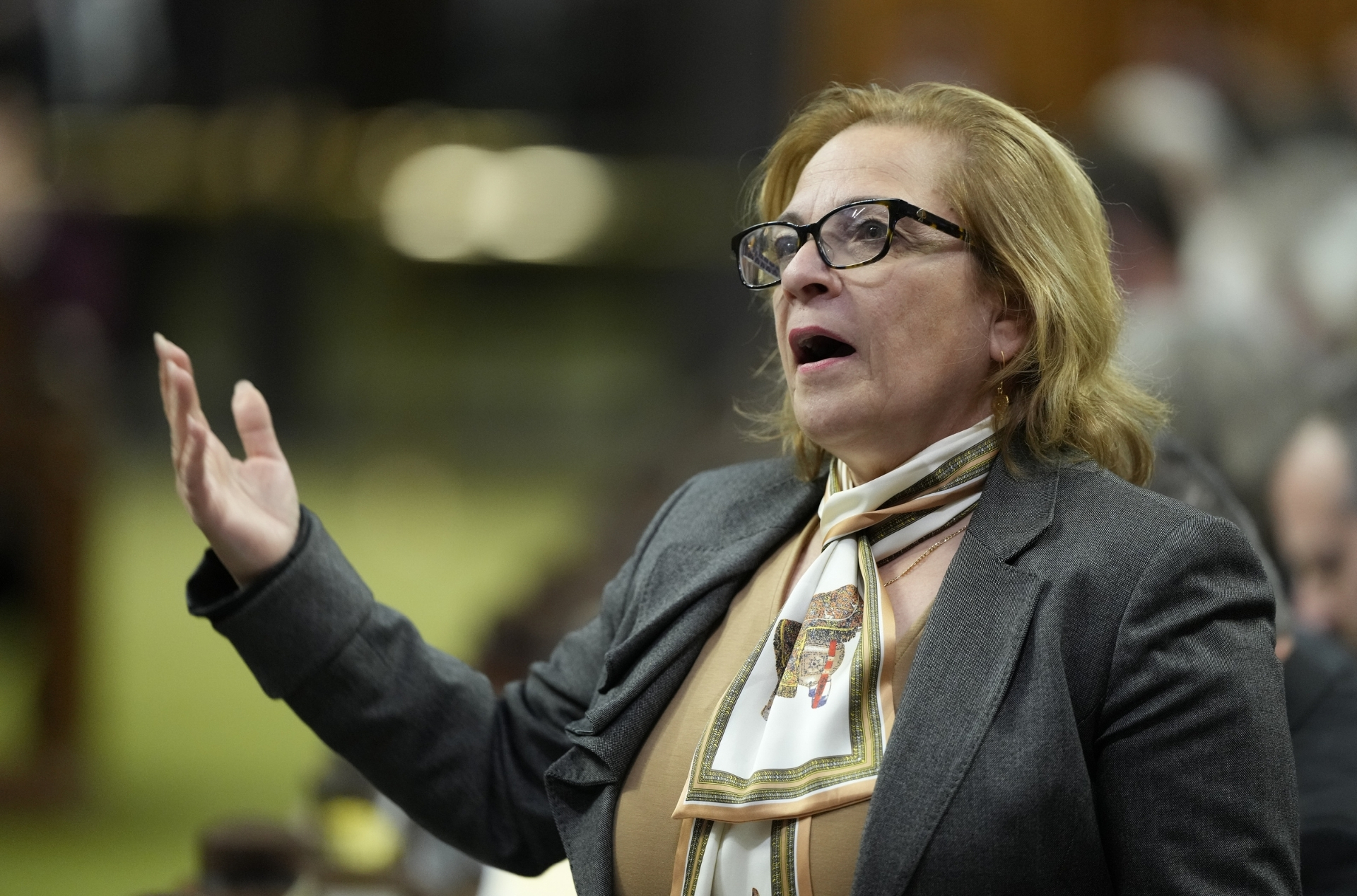
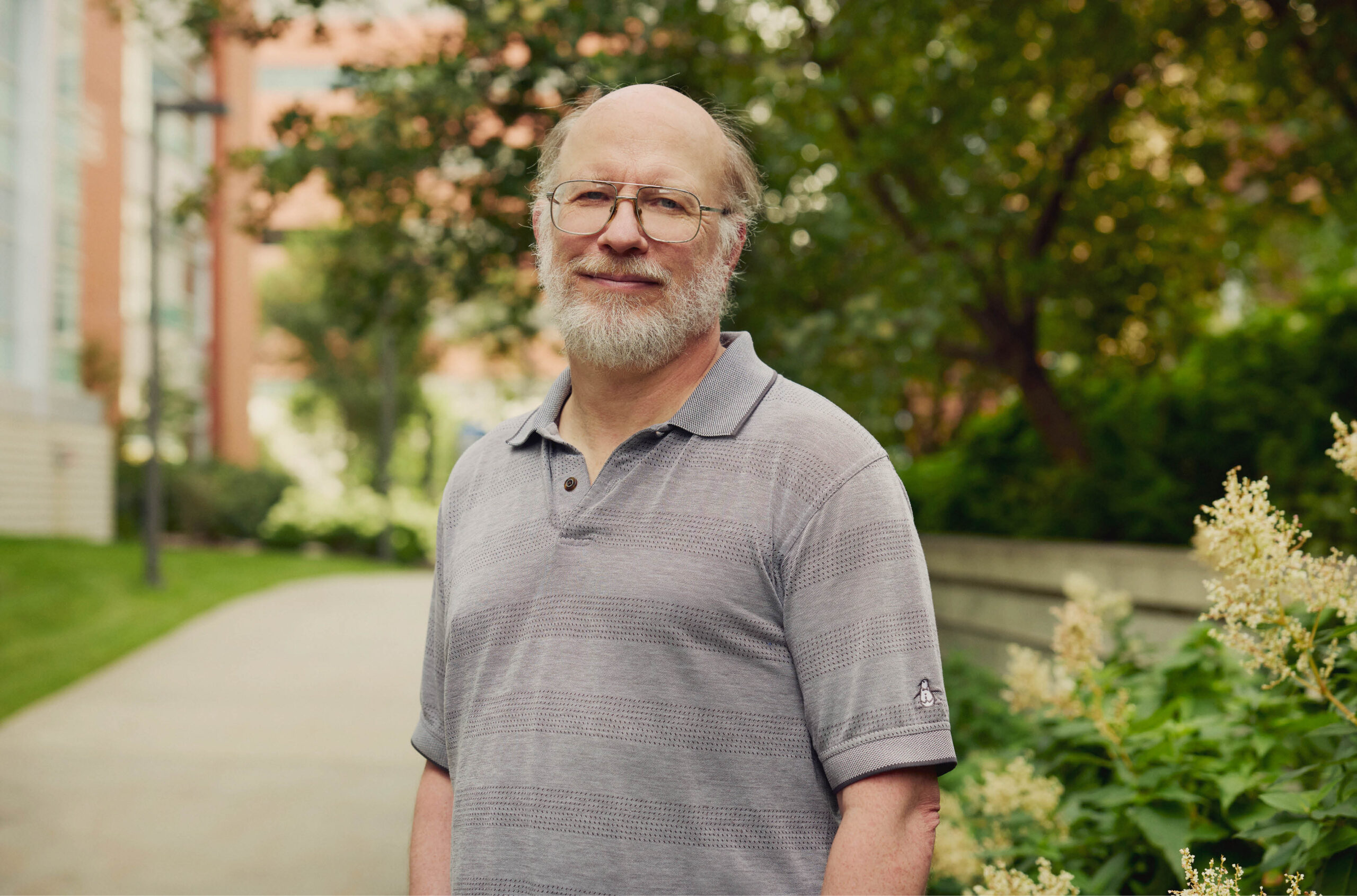
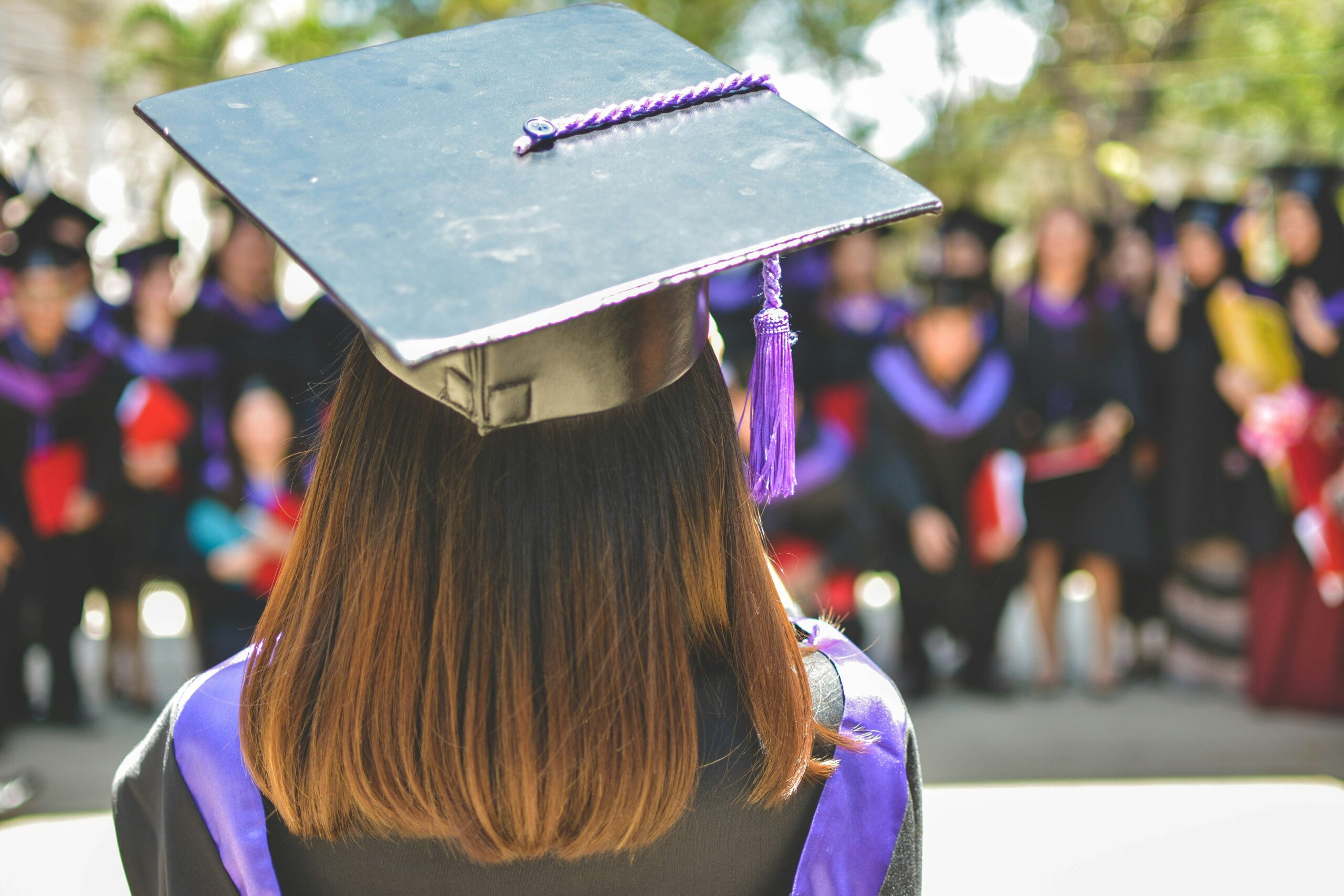
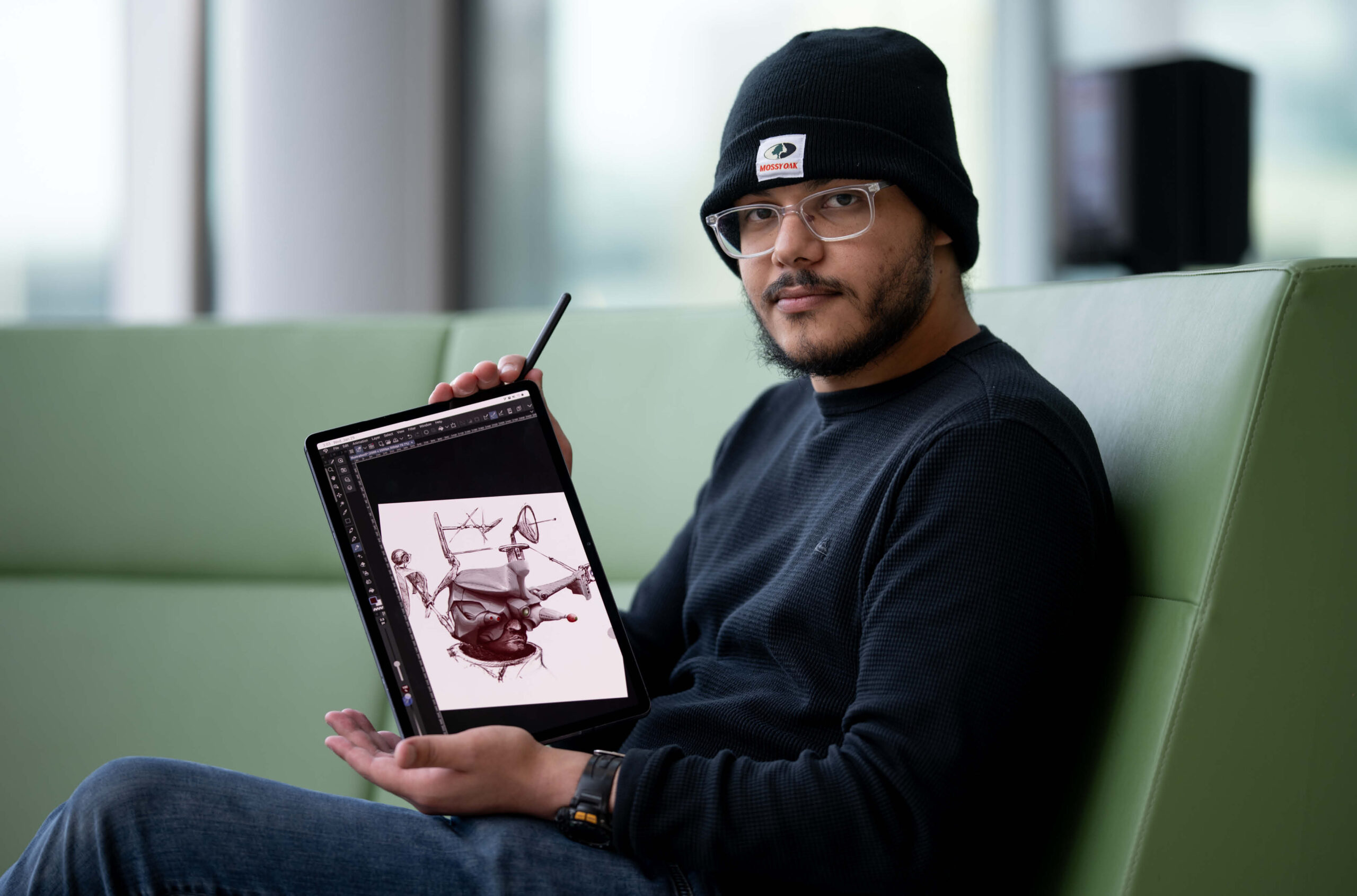


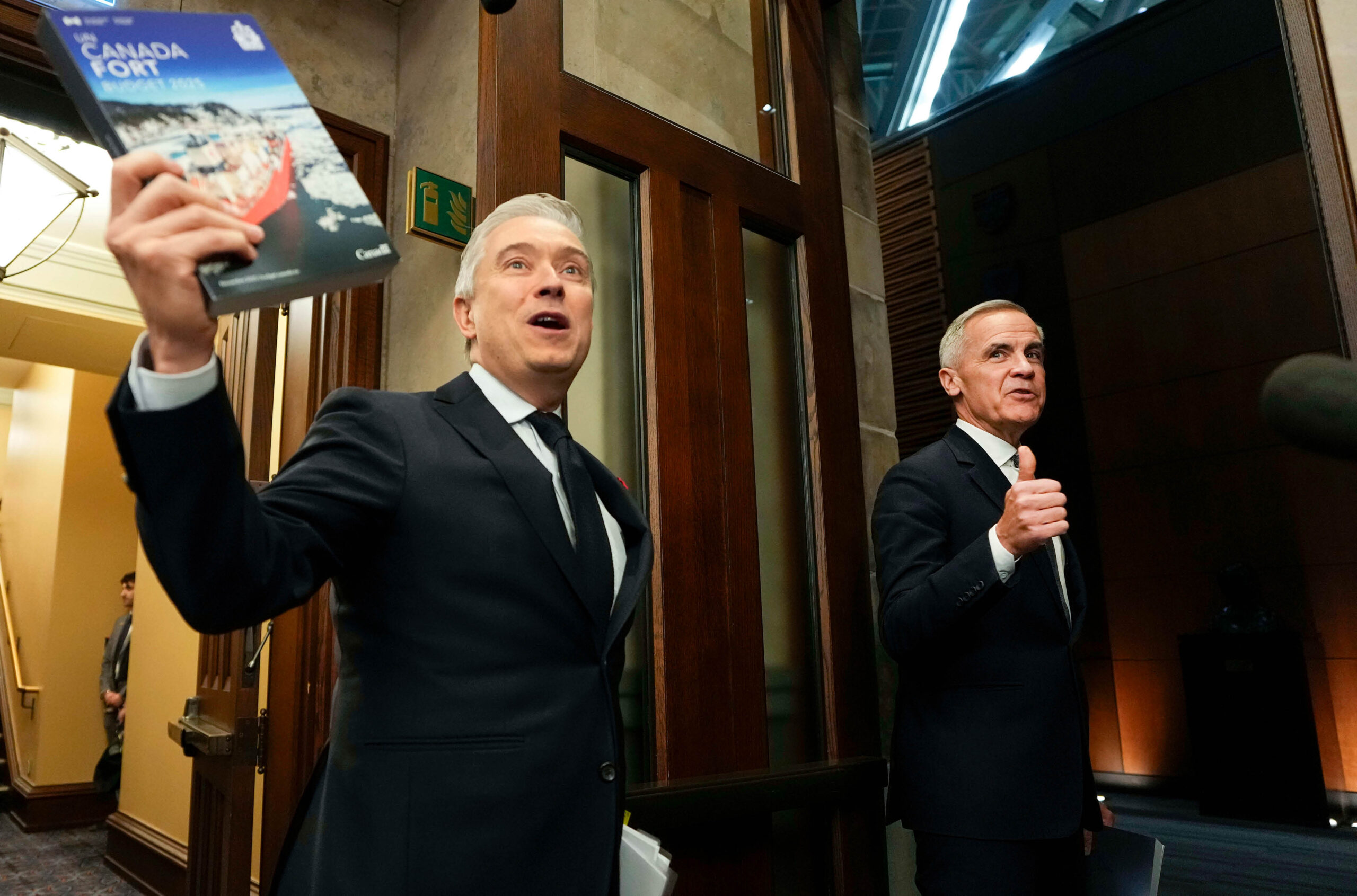
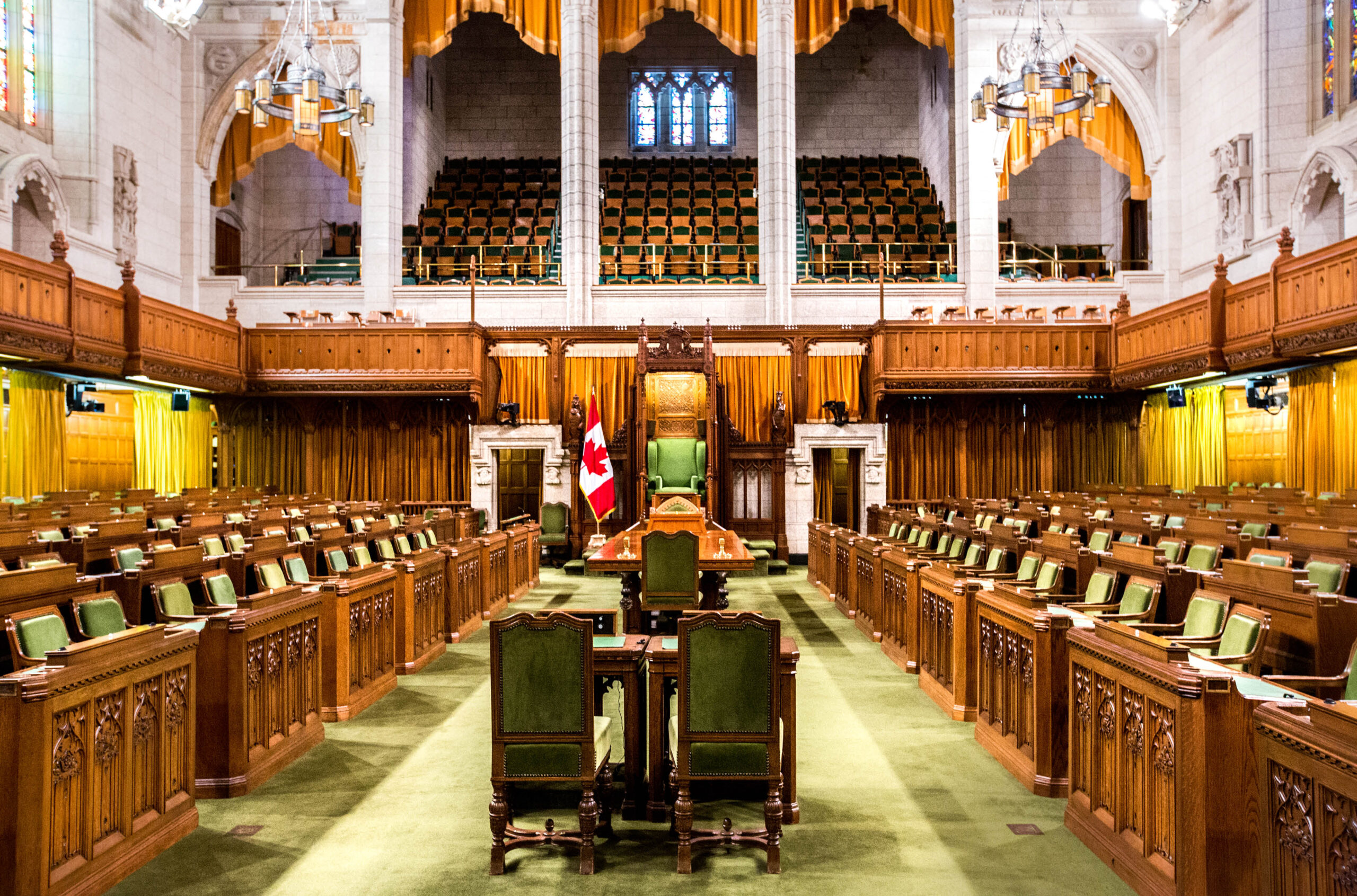


Post a comment
University Affairs moderates all comments according to the following guidelines. If approved, comments generally appear within one business day. We may republish particularly insightful remarks in our print edition or elsewhere.
1 Comments
My heart is heavy, reading about the devastating loss. There are many innocents who pay the price they did not intend, to due to wars of men. I pray that their families eventually find peace as they mourn their losses. God be with them! Kimberly